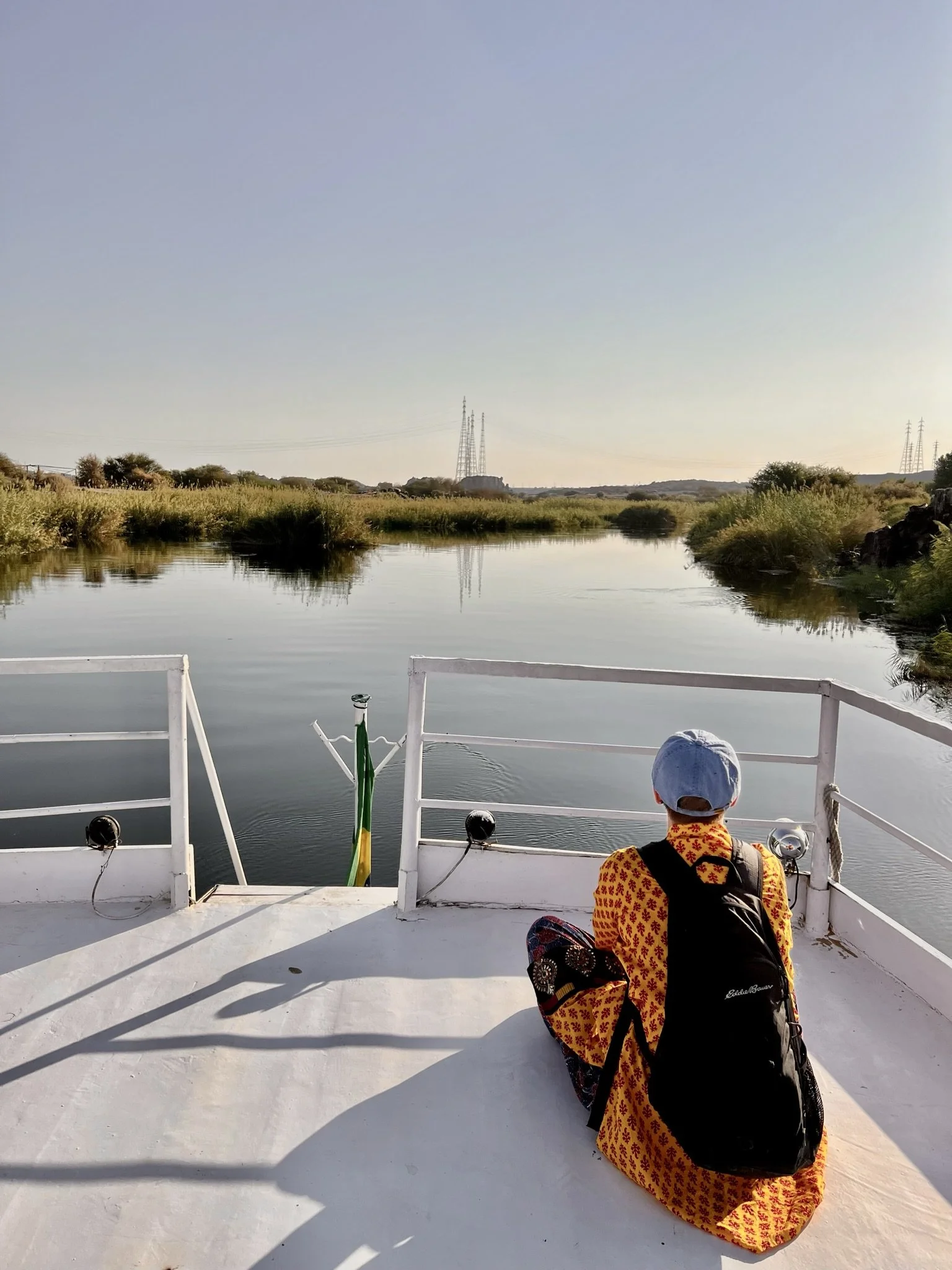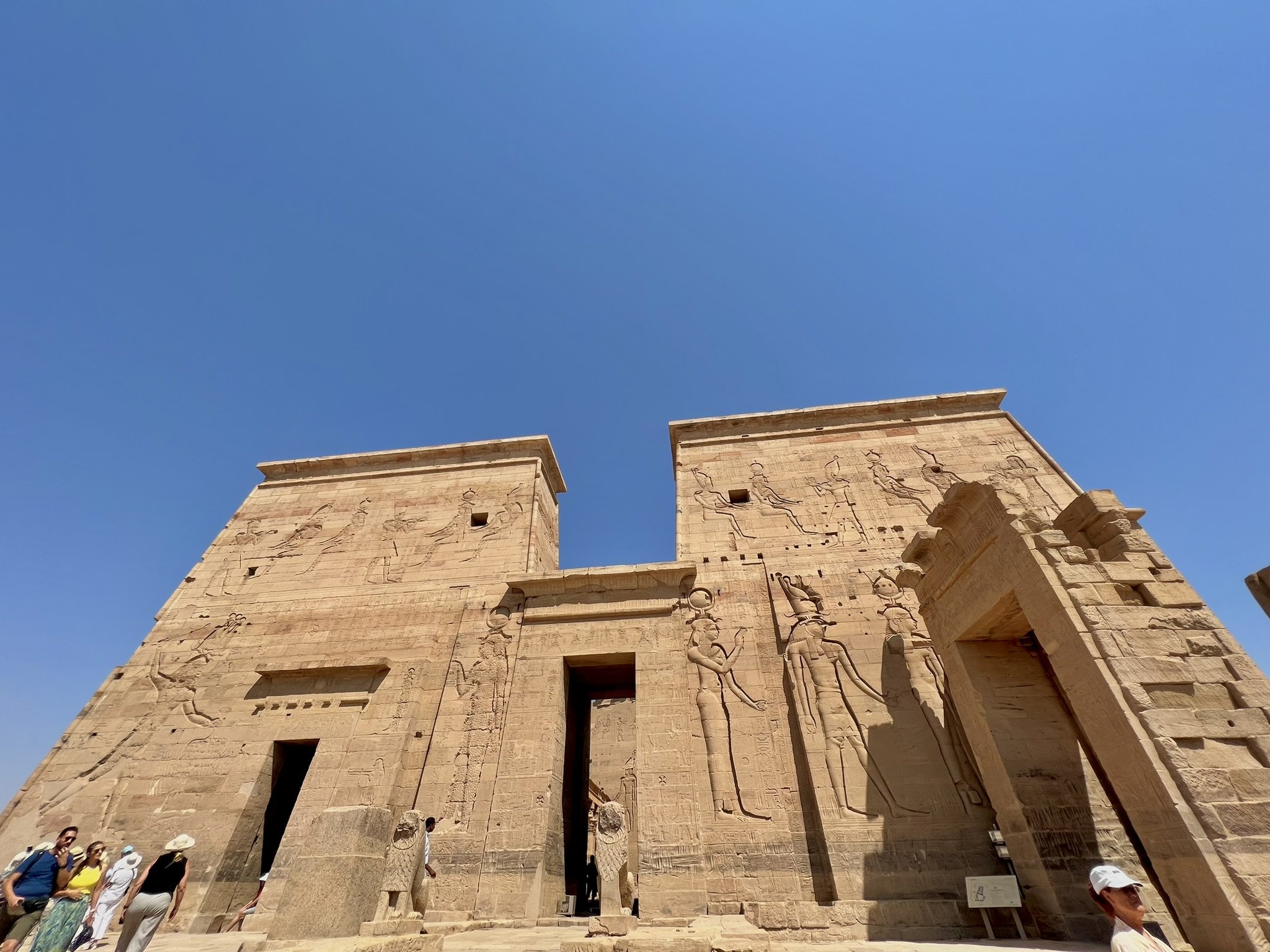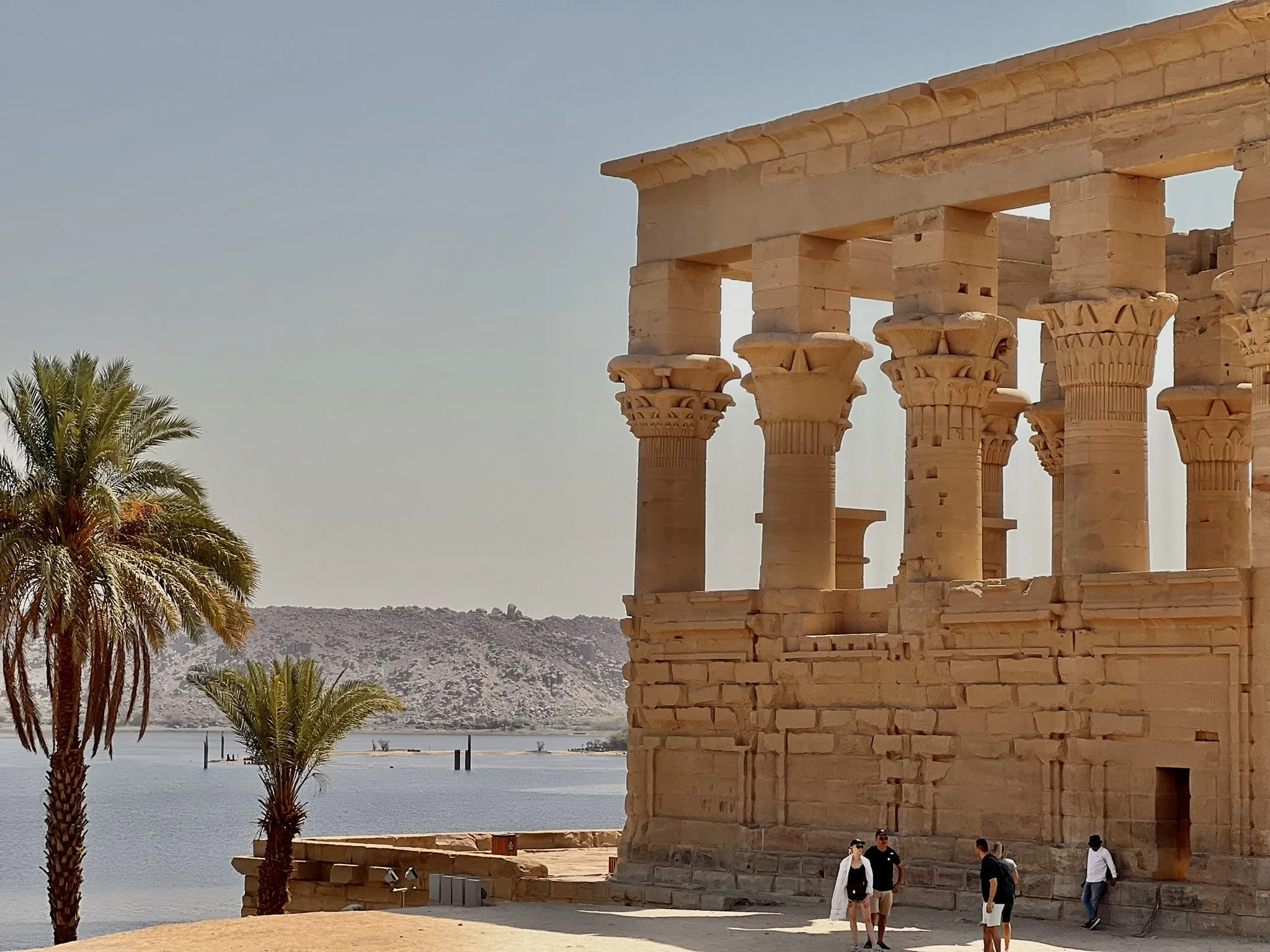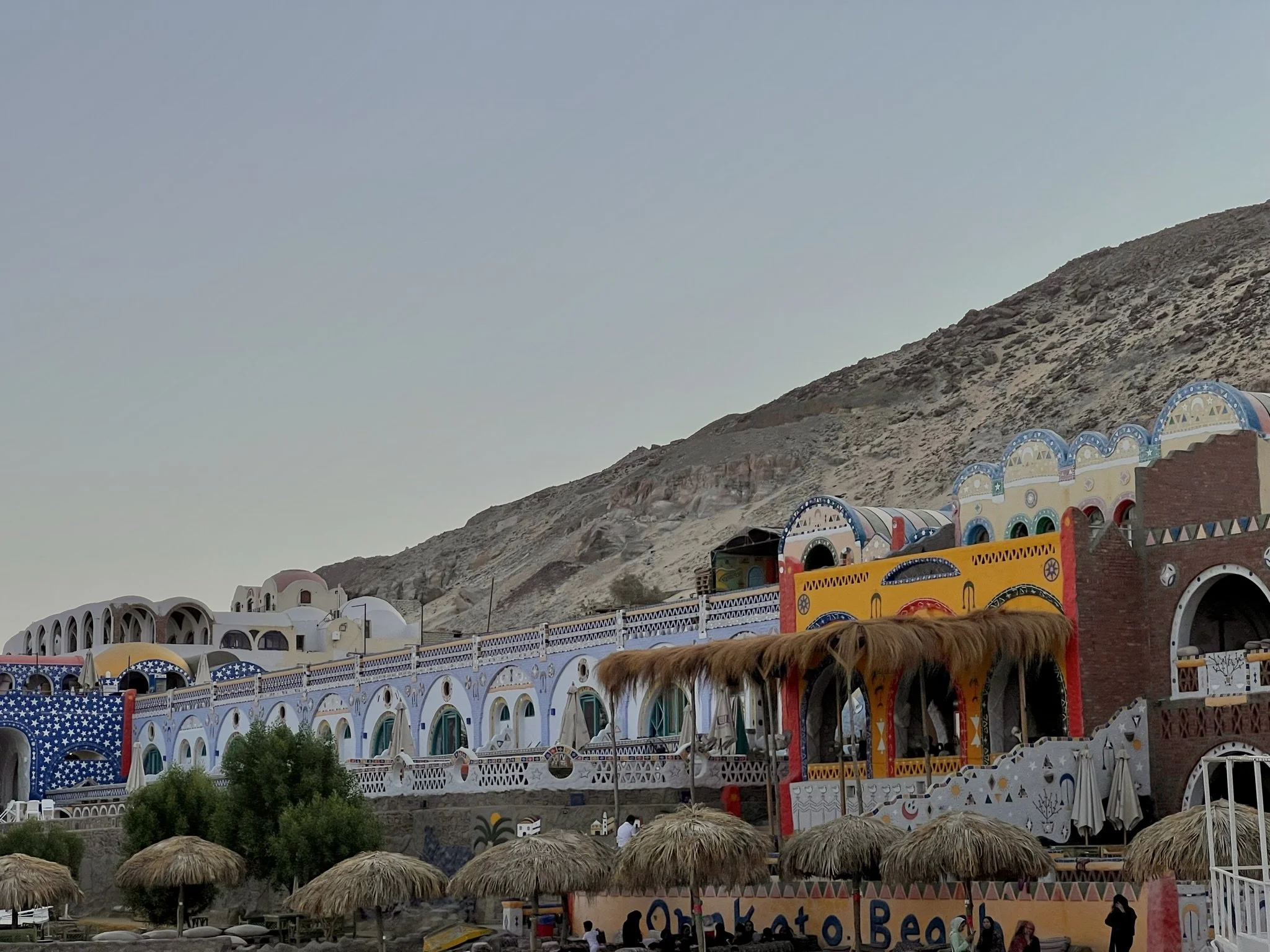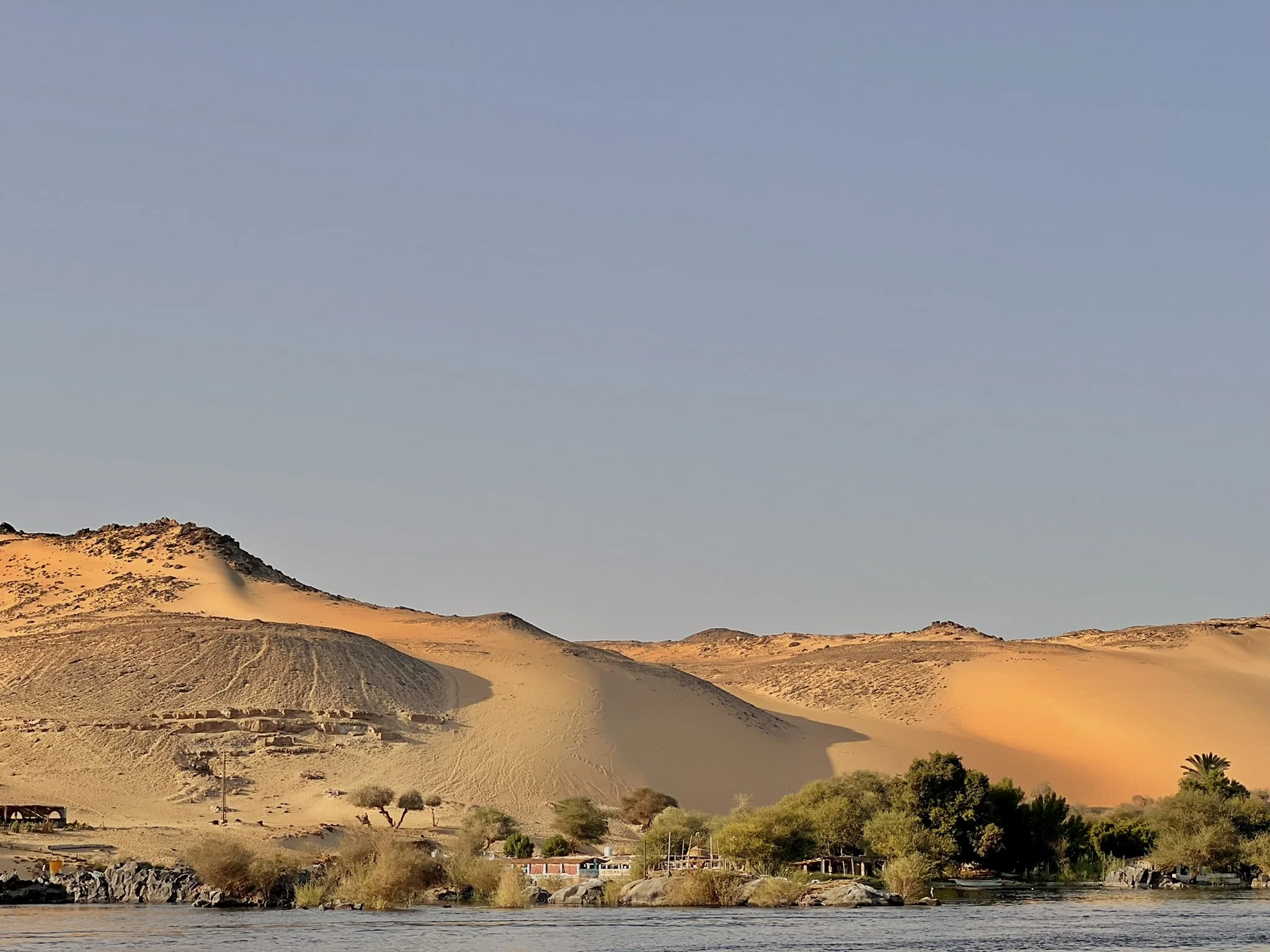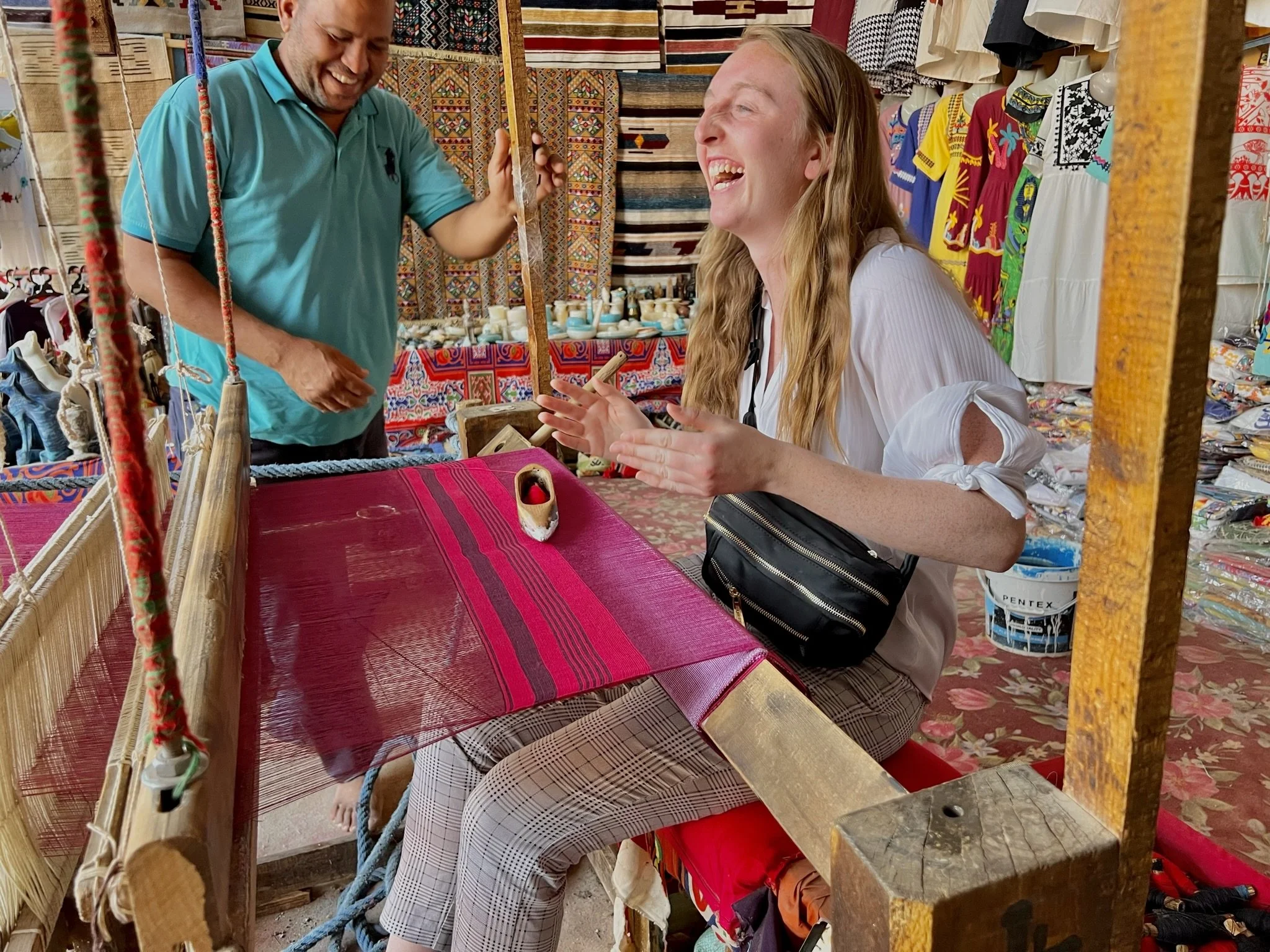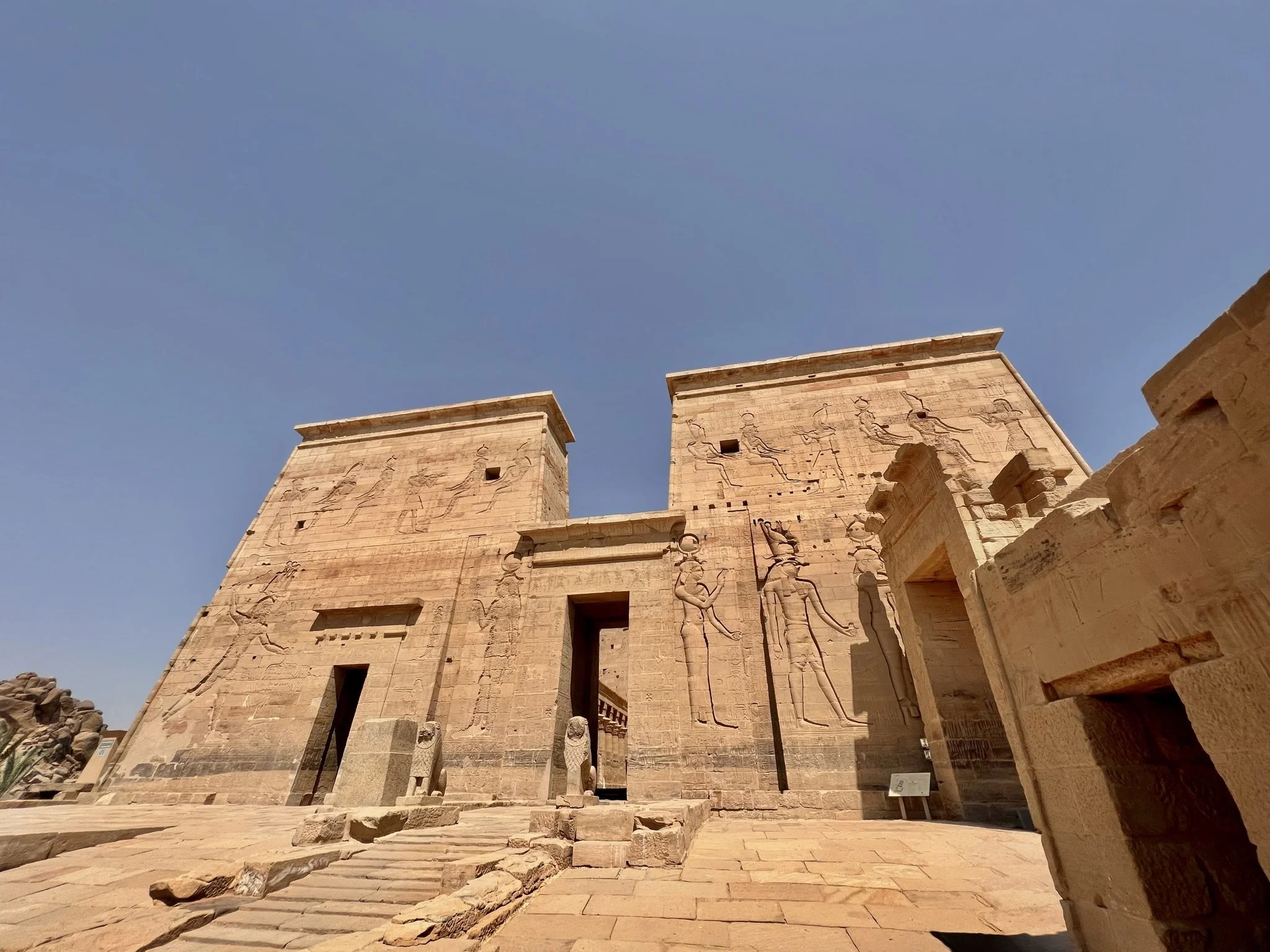
10 Must-See Attractions in Aswan: Egypt's Southern Gem
ASWAN, EGYPT
Nestled along the banks of the Nile in southern Egypt, Aswan is a city that captivates visitors with its unique blend of ancient wonders, natural beauty, and Nubian culture. Often overshadowed by its more famous northern counterparts, Cairo and Luxor, Aswan offers a more relaxed and intimate Egyptian experience. With its balmy winter climate and stunning river scenery, this city has been a favorite winter resort since the beginning of the nineteenth century.
Aswan, the ancient city of Swenett, has been southern Egypt's strategic and commercial gateway since antiquity. It was a garrison town for the military campaigns against Nubia, the source of Egypt's most valued building material, granite, and the legendary source of gold. Today, Aswan continues to be an important market town and tourist center, offering a wealth of attractions that showcase Egypt's rich history and natural splendor.
In this blog post, we'll explore the 10 must-see attractions that make Aswan a true gem of Egypt. From ancient temples and modern marvels to natural islands and cultural experiences, these sites offer a comprehensive look at what makes Aswan special.
1) Abu Simbel Temples
Although technically not in Aswan itself, no visit to the region is complete without a trip to the awe-inspiring Abu Simbel temples. Located about 290 km southwest of Aswan, these massive rock temples were originally carved out of the mountainside during the reign of Pharaoh Ramesses II in the 13th century BC, as a lasting monument to himself and his queen Nefertari.
The most remarkable aspect of Abu Simbel is not just its immense size and intricate carvings, but also its modern history. In the 1960s, the entire complex was relocated in its entirety to an artificial hill to avoid being submerged during the creation of Lake Nasser. This UNESCO World Heritage site consists of two temples: the Great Temple, dedicated to Ramesses II, and the smaller Temple of Hathor, dedicated to Queen Nefertari.
Tip: The best time to visit is early morning when the rising sun illuminates the inner sanctuary of the Great Temple. This phenomenon occurs twice a year, around February 22 and October 22.
2) Philae Temple Complex
The Philae Temple Complex, dedicated to the goddess Isis, is one of the most beautiful and well-preserved ancient monuments in Egypt. Like Abu Simbel, it was also relocated (stone by stone) to its current location on Agilkia Island to save it from the rising waters of the Nile caused by the construction of the Aswan High Dam.
The main temple is a superb example of the Ptolemaic architecture and features numerous reliefs and carvings. Don't miss the Sound and Light show in the evening, which brings the temple's history to life through narration and illumination.
Tip: Take a felucca (traditional sailboat) to reach the island for a more authentic experience.
3) Aswan High Dam
A modern marvel of engineering, the Aswan High Dam was constructed between 1960 and 1970. It controls the Nile's annual floods, provides increased water storage for irrigation, and generates hydroelectricity. The dam's construction led to the creation of Lake Nasser, one of the world's largest artificial lakes.
While not as visually spectacular as ancient monuments, the High Dam offers insight into modern Egypt's development and the environmental changes that have shaped the region. The panoramic views from the top of the dam are impressive, especially at sunset.
4) Nubian Village
For a taste of local culture, a visit to a Nubian village is a must. The colorful houses, warm hospitality, and unique traditions of the Nubian people offer a stark contrast to the ancient monuments. Many villages are located on Elephantine Island or nearby riverbanks.
During your visit, you can enjoy traditional Nubian music and dance, sample local cuisine, and even get a henna tattoo. It's an excellent opportunity to support the local community and gain insight into a culture that has inhabited this region for thousands of years.
5) Elephantine Island
Elephantine Island, located in the middle of the Nile, has been inhabited since the predynastic period and holds significant archaeological importance. The island is home to the ruins of ancient temples, including the Temple of Khnum, and a Nilometer used to measure the Nile's water levels.
The Aswan Museum, located on the island, houses a collection of artifacts from various periods of Egyptian history. The botanical gardens on the island's southern end offer a peaceful retreat with exotic plants and stunning views of the Nile.
6) Unfinished Obelisk
Located in the Northern Quarries, the Unfinished Obelisk is the largest known ancient obelisk. Commissioned by Queen Hatshepsut, it was abandoned when cracks appeared in the granite. Today, it provides valuable insight into ancient Egyptian stone-working techniques and tools.
The site allows visitors to see how obelisks were cut out of solid bedrock and offers a unique perspective on the scale of these monuments. Interpretive signs around the site explain the process and the obelisk's history.
7) Kitchener's Island (Aswan Botanical Garden)
Also known as El Nabatat Island, this small oval-shaped island in the Nile was given to Lord Kitchener in the 1890s when he was commander of the Egyptian army. Kitchener turned the island into a botanical garden, importing plants from all over Africa and Asia.
Today, the island is a beautiful park filled with exotic plants, trees, and flowers. It's an ideal spot for a peaceful walk or a picnic, offering a refreshing contrast to the ancient sites and busy markets of Aswan.
8) Tombs of the Nobles
On the West Bank of the Nile, the Tombs of the Nobles offer a less crowded alternative to the famous tombs in Luxor. These rock-cut tombs belong to princes, priests, and high officials of the Old and Middle Kingdoms.
The tombs are known for their vivid wall paintings depicting scenes from daily life in ancient Egypt. The Tomb of Harkhuf, with its famous letter from a young king, and the Tomb of Mekhu and Sabni, with its detailed reliefs, are particularly noteworthy.
9) Monastery of St. Simeon
This 7th-century Coptic monastery, located on the west bank of the Nile, offers a glimpse into early Christian history in Egypt. Although now abandoned, the monastery is remarkably well-preserved due to the dry climate.
The monastery's architecture is a unique blend of Coptic Christian and Islamic fortress styles. Visitors can explore the living quarters, kitchen, and the church with its faded frescoes. The elevated location of the monastery also provides panoramic views of the surrounding desert and the Nile.
10) Mausoleum of Aga Khan
Perched on a hill on the west bank of the Nile, the Mausoleum of Aga Khan III is a relatively modern monument but one of great beauty. Built in the late 1950s, it houses the tomb of Sir Sultan Muhammed Shah, Aga Khan III, the 48th Imam of the Ismaili sect.
The mausoleum, constructed of pink granite, is an excellent example of Islamic architecture. Although the interior is not open to the public, the exterior and the views of the Nile from the site are spectacular, especially at sunset.
Top Things To Know About Aswan
Here are the top 6 things people should know before or when they are visiting Aswan, Egypt:
Climate and Timing: Aswan is one of the hottest and driest cities in Egypt. Summer temperatures (May to October) can soar above 40°C (104°F). The best time to visit is from November to March when temperatures are milder. If visiting during summer, plan outdoor activities for early morning or late evening, stay hydrated, and always carry sunscreen and a hat.
Nile Cruises: Aswan is a popular starting or ending point for Nile cruises to Luxor. If you're planning to take a cruise, book in advance, especially during peak season (December to February). These cruises offer a unique perspective on Egypt's ancient sites and rural life along the Nile.
Nubian Culture: Aswan is home to a significant Nubian population. The Nubians have their own distinct culture, language, and traditions. Be respectful when visiting Nubian villages and always ask for permission before taking photos of people. Learning a few Nubian words can go a long way in making connections with locals.
Abu Simbel Logistics: While Abu Simbel is a must-see, it's not in Aswan itself. It's about a 3-hour drive each way. Many visitors opt for the early morning convoy or a short flight. If driving, prepare for an early start (around 4 AM) to beat the heat and crowds.
Dress Code: Although Aswan is more relaxed than some other parts of Egypt, it's still a conservative area. Dress modestly, especially when visiting religious sites or local villages. Women should cover their shoulders and knees, and men should avoid shorts in temples and mosques.
Haggling Culture: Bargaining is expected in markets and with street vendors. Start at about 50% of the asking price and negotiate from there. However, be respectful and remember that a few Egyptian pounds can mean more to a local than to a tourist. In established shops and restaurants, prices are usually fixed.


